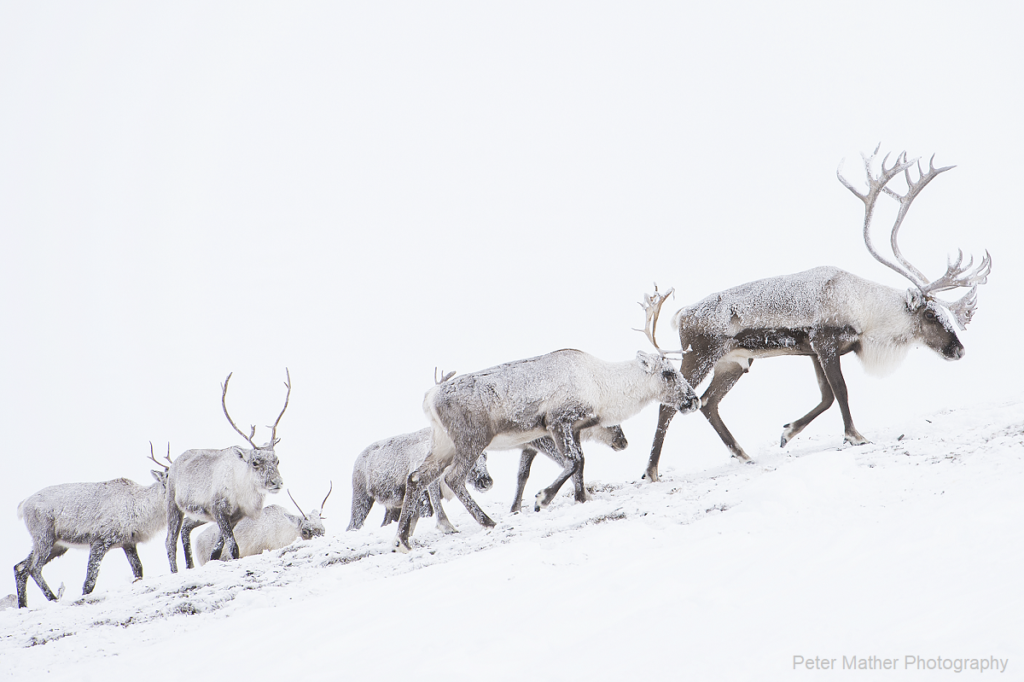Biden administration brings hope for conservation, action on climate change

Today, I’m hopeful. With the swearing in of Joseph R. Biden as the 46th President of the United States, we have put behind us a long national nightmare of environmental carnage, and can once again set our sights on bipartisan conservation progress, science-based decision-making, and valuing our public lands for the national treasures that they are instead of the short-term profits they could be exploited for.
President Biden immediately signed a series of executive orders, including one that directs “the Department of Interior to protect our nation’s treasures by reviewing the boundaries and conditions of the Grand Staircase-Escalante, Bears Ears, Northeast Canyons and Seamounts Marine national monuments, and placing a temporary moratorium on all oil and natural gas leasing activities in the Arctic National Wildlife Refuge.”
By calling for an immediate halt on all oil and gas leasing activities in the Arctic Refuge, @JoeBiden is helping to protect the sacred coastal plain from oil drilling. Our statement: https://t.co/3ontC4afY4 #ProtectTheArctic #StandWithTheGwichi pic.twitter.com/96ogxuja4Y
— Alaska Wilderness League (@alaskawild) January 20, 2021

What does this mean?
It signals, right out of the gate, that protecting the Arctic Refuge is a national priority and sets the stage for follow-up actions by the Department of Interior to consider the legality of the leasing program. We believe that such a review — coupled with our active litigation — will ultimately lead to the cancelation of the leases in the refuge, which were based on a woefully inadequate environmental review, sidelined science, faulty revenue assumptions and many other failures.
While actions President Biden has and will continue to take to safeguard the refuge are critical, it’s important to keep in mind that we also still need Congress to pass legislation to repeal the 2017 Tax Act and to permanently protect the coastal plain so it is never again vulnerable.
What about seismic?
We have collectively succeeded in blocking the Trump administration from green-lighting a fleet of 90,000-pound seismic trucks and other heavy equipment and hundreds of workers from being green-lit. The clock has run out. Let that sink in. It means that we have reached the end of the Trump administration without any on-the-ground damage to the fragile tundra, to threatened polar bears in their dens, or to other wildlife on the Arctic Refuge coastal plain! Neither the Bureau of Land Management or the U.S Fish and Wildlife Service have completed the necessary permitting. We believe the enormous public backlash against the program — including the comments that you and more than 6 million others filed (including so many young people) — delayed the ability of these agencies to process the permits, in addition to other substantive legal and scientific objections and hurdles.
@alex.haraus OUR 6 MILLION LETTERS HAVE BEEN ACCEPTED. THANK YOU. ##anwr ##conservation ##activism ##savethearcticrefuge ##climateemergency ##wedidit
♬ original sound – Alex Haraus
State of the Arctic Refuge leases
On January 19, the Bureau of Land Management announced that it has finalized oil leases for 437,804 acres of the Arctic Refuge coastal plain. It appears the total revenue raised will be even less than the $14 million that was initially announced — closer to $12 million as opposed to the $1.8 billion promised by the Trump administration in signing the 2017 Tax Act.

What about other areas of wild Alaska under threat?
President Biden’s executive orders also trigger a review of other Trump administration environmental actions. We’re pleased to see the administration’s plans to review the gutting of the roadless rule for the Tongass National Forest, ConocoPhillips’ controversial Willow Project in the National Petroleum Reserve-Alaska, and a new hunting rule in Alaska national preserves that allows bear baiting and killing of wolf pups and bear cubs in places like Denali. Finally, last minute actions by former President Trump to open tens of millions of acres of Alaska public lands to potential mining has also caught the eye of President Biden, who will be ordering a review of the recent Bering Sea-Western Interior Planning Area change in the days to come. Like the Arctic Refuge, these are just starting points, and we don’t expect this list to be the entirety of positive action we’ll see for Alaska in the months to come. There is much more follow-up work to be done by the incoming cabinet Secretaries and agencies to fix the damage wrought by their outgoing Trump counterparts.
What else are we looking for?
We’ll be looking for more action in the days ahead to signal prioritizing protection of 30 percent of our nation’s lands and waters by 2030, among other future actions that could have positive impacts on Alaska. These are mere first steps, and we will continue to build support across the country, elevating the cause of wild Alaska as key to confronting the climate and biodiversity crises and in standing up for Indigenous rights.
Thank you, President Joe Biden. https://t.co/mbYLAR0UPq
— Patagonia (@patagonia) January 20, 2021
Day one of @POTUS‘s presidency: He’s shown he will fulfill his promise to #ProtectTheArctic and #StandWithTheGwichin by banning new oil and gas permitting. Let’s continue working together to make these protections long term. pic.twitter.com/9Z9qjiSbEr
— Earthjustice (@Earthjustice) January 20, 2021
One of @JoeBiden’s first acts as president will be to #ProtectTheArctic from oil and gas activity.
— Hip Hop Caucus 🏁 (@HipHopCaucus) January 20, 2021
Thank you for taking the first step to ensure drilling never happens in the Arctic Refuge.#StandWithTheGwichin pic.twitter.com/DVX09diAyj
Thank you President @JoeBiden for this critical first day move to #StandWithTheGwichin and #ProtectTheArctic by taking action to defend the sacred Arctic Refuge from oil and gas leasing. https://t.co/PkwcvkD18Z
— Sierra Club (@SierraClub) January 20, 2021
